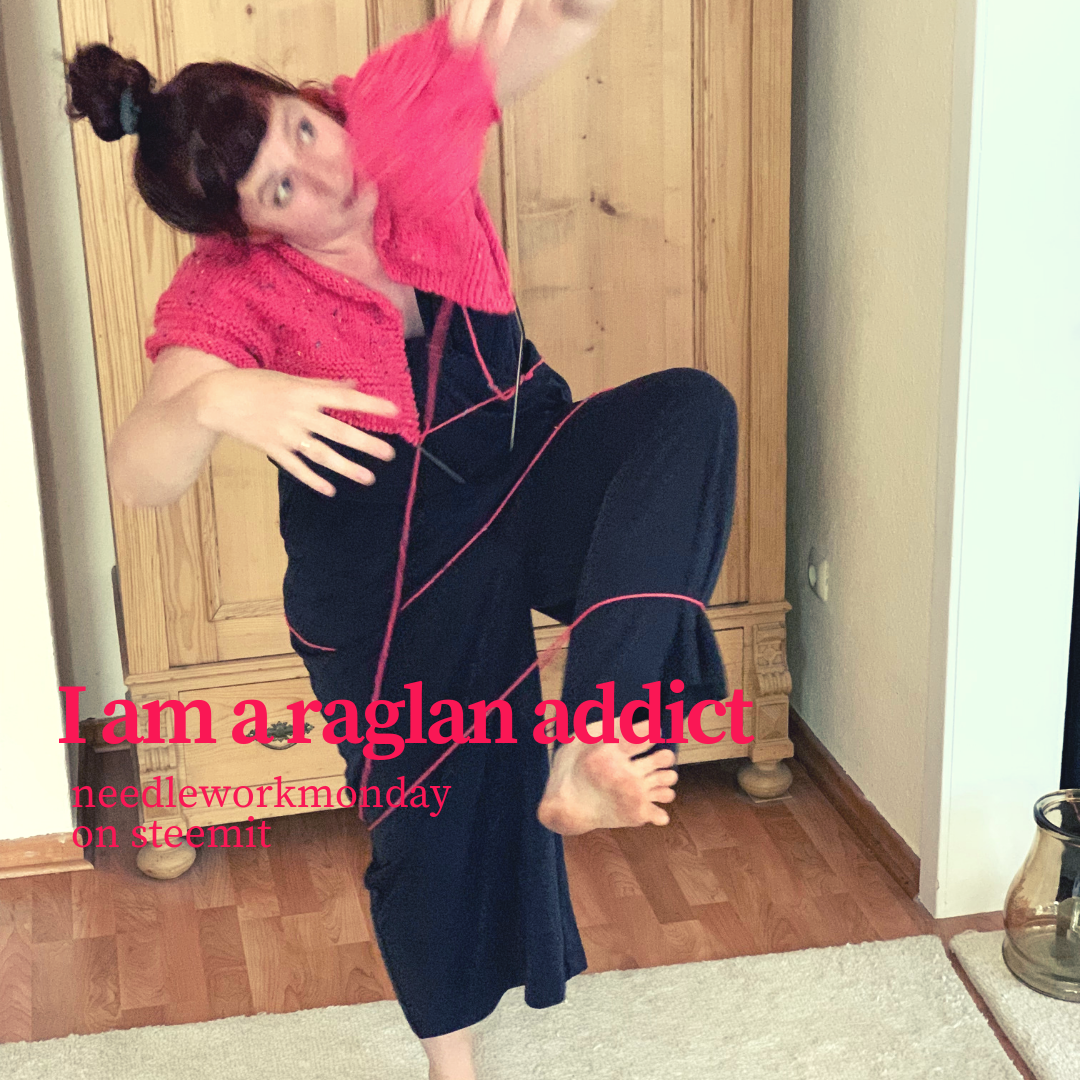
I am addicted to raglan cardigans. I find them sooooo relaxing. Perhaps because I know exactly what I must do…
…
…
Are you laughing already? Me, knowing exactly what I must do? I have to
admit this time my pompous claim to know everything was not as
exaggerated as many other things I have written till now. I knitted and
crocheted so many top-down raglan sweaters so that I am fairly competent
with this. But there are still two three parts I must think about:
- The size of the neckline.
- The size of the sleeve opening
- The short row part of the back neckline.
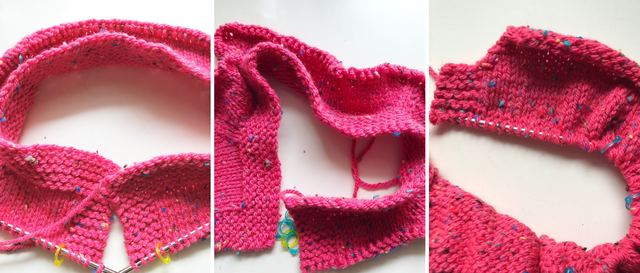.png)
I will explain my difficulties regarding the Fake Frankie cardigan I started some weeks ago (you can see the early stage here).
The question of the neckline size and beginning stitch count is for a
top-down raglan sweater decisive. With this decision not only the width
of the neckline is determined, but also the raglan set-up, meaning the
later width of sleeves, back and fronts. With the Fake Frankie there was
another question to be answered. The original Frankie
shows a sweater where the neckline ribbing is knitted together with the
whole sweater. Naturally (lazy as I am) I wanted to replicate this. But
the original Frankie cardigan has another special feature; its fronts
are not closing. This feature is not to my liking and I wanted to change
it for my Fake Frankie. What I did not consider is, that neckline and
front design are dependent of one another. This led to me casting on and
unraveling this beast wonderful cardigan for four times.
Yes… me… four times. A novelty. Normally the thing would burn. Perhaps
the mediation practice is paying off (no way ?).
My first neckline problem where too little stitches. I would have choked
myself. The next try was not much better. The third had an adequate
neck opening but here I encountered the relation between fronts and
collar. By making the fronts wider (so that they close) the neckline did
not lie flat like with the originally Frankie, but the collar was
standing up like a mandarin collar or small turtle neck. Super stiff and
not to my liking.
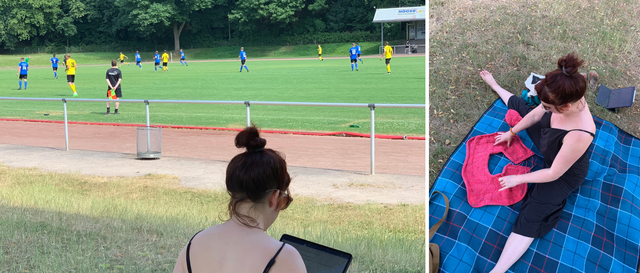.png)
For the forth attempt I decided not to knit the collar, and to cast on
additional stitches for the fronts after 9 rows. I will pick up the
neckline stitches later and hope my above musings are sensible, meaning
that the sloped front parts (because of the additional stitches of row
9) will lead to a collar which lies flat.
With all of these thoughts thought, I could finally divide the beginning
stitches into the five parts and define the raglan lines. I have chosen
to cast on 70 stitches and divided them into 12 for the fronts, 10 for
the sleeves and 26 for the back.
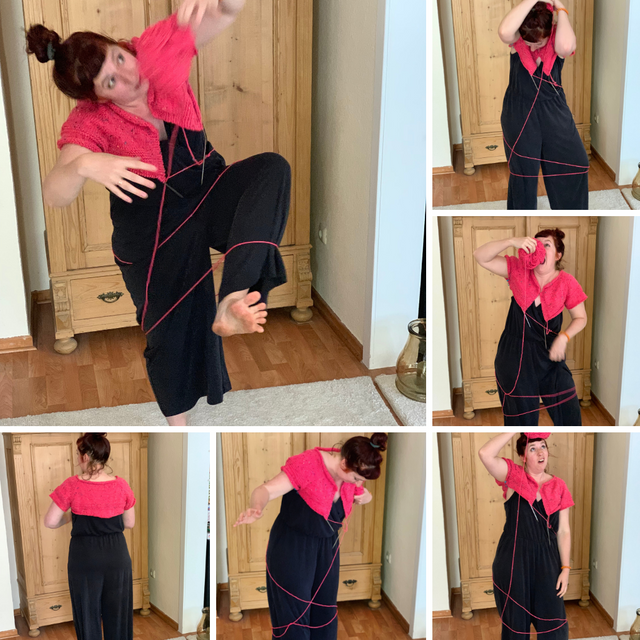.png)
Now we are approaching problem two….
I knitted happily onward only to notice with the first try on that the
fronts were too big in relation to the sleeves (they weren’t, I
miscalculated completely). Therefore, I decided in row 16 to stop the
raglan increases for the fronts. In row 50 I tried the cardigan on again
and tada: the fronts were too small and the sleeves to big (the noise
you hear, is my head on the table).
For the next three times I only increased the fronts. I could have avoided this…
In row 56 I separated the sleeves from the body. I was too impatient to
unravel again for smaller sleeves (I know…perhaps more meditation is
called for) and here we are:
.png)
The last problem will be a future task. I wanted to rise the back neckline and I have read that many knitters do this with short rows. I am not sure if they do it while casting on or later. Hopefully later, because than I have a chance to try this technique out. Has someone tried this neckline trick already?
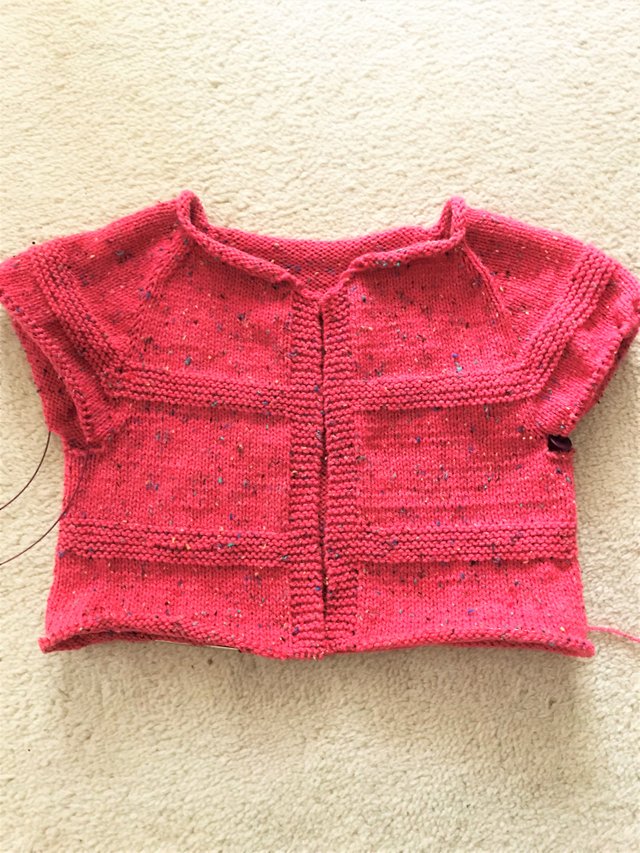
At last I wanted to tell you of a cmal – a crochet make along. My friend Lisa Pinenotes has designed this beautiful dragonfly granny square and is giving you the pattern for free.
.png)
photos by Lisa Pinenotes
I am thinking of a bunting for my entrance because my woven mandala
is getting boring (I never made another one…?) The cmal will run till
4th of august and to top the free pattern, she also gives away prices to
the participants.
If you are new to crochet don’t fear, Lisa has made a YouTube tutorial, so you can learn to make the dragonfly square. Hope to see some dragonflies ??
Thank you @crosheille for iniciating and @muscara, @shanibeer, @marblely for hosting the #needleworkmonday. If you want to see more beautiful projects with yarn, fabric and most of all needles, follow @needleworkmonday on steemit. Or even better grab your needles and keyboard and join the #needleworkmonday community. You can read more comments on this post on my steemit blog.